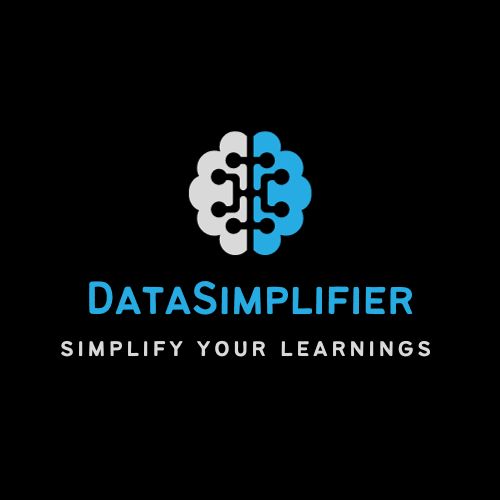In the fiercely competitive landscape mastering root cause analysis has become a critical differentiator for aspiring professionals in data analytics, product management, and problem-solving intensive fields. The main idea of this article is to train you with the necessary knowledge and skills not only for personal interviews but also for the root cause analysis template through which one has to comprehend and sometimes, apply the model being used in multinational companies that is the best cure to such problems.

While shifting the focus of the investigatory procedure to root cause analysis, we’ll ascertain the main contrasts between case studies vs root cause and equip you with the knowledge of ways and when to apply each method. Through detailed explanations and a root cause analysis case study example, you’ll gain practical insights that will definitely set you apart from the crowd in the interview process.
Unlike other resources, this manual offers actions that can be taken to get ready to answer root cause analysis questions or a case scenario which you may find in your selection process. By putting these techniques into practice, not only will you improve your problem-solving skills, but employers will also see your potential to be that individual who knows how to implement solutions that are capable of changing the business scenario.
Why Root Cause Analysis Matters in 2024:
Before we dive into the topic in detail, let’s initially discuss why root cause analysis is more important in 2024. According to recent industry trends in India, companies are increasingly focusing more on candidates with strong analytical and problem-solving skills for our domain specifically. The survey results of TechHire India tied this change to an expansion in the use of root cause analysis during the interview phase. Indeed, 78% of tech companies are now asking root cause analysis questions in their interview process, compared to 62% in 2022. This emphasizes the significance of this ability in the job market.
Understanding Root Cause Analysis: The Foundation of Problem-Solving
Root cause analysis is not just a buzzword but it is a systematic method of finding the hidden cause of the problem. However, root cause analysis, the one that focuses on the underlying problems of the setback that once removed, will not arise again is the opposite of surface-level debugging
Key Differences: Case Study vs Root Cause Analysis
The two-a-side of the case study and root-cause analysis are essential tools for solving problems, although different from each other. Here they are:
- Case Study:
- Focuses on a specific instance or scenario
- Often used for learning and illustrating concepts
- May not always identify the deepest underlying causes
- Root Cause Analysis:
- Systematically investigates the core reasons behind issues
- Aims to prevent problem recurrence
- Utilizes specific techniques to uncover hidden factors
Understanding these differences is very crucial while preparing for interviews, as you may be asked to demonstrate your knowledge of both approaches and even ask what are the purposes of them.
Essential Root Cause Analysis Techniques
To excel in root cause analysis, you need to master a lot of key techniques. Here are the most important ones you should definitely know:
- The 5 Whys Technique
This straightforward yet efficient approach comprises asking “why” repeatedly to remove the layers of the problem. For example:
Problem: The website is experiencing high bounce rates.
Why? Users are leaving the site quickly.
Why? The page load time is slow.
Why? Large image files are slowing down the loading process.
Why? There’s no image optimization process in place.
Why? The development team lacks awareness of performance best practices.
Root Cause: The fact that the development team lacks the necessary performance optimization knowledge is one of the main reasons for the failure of the project - Fishbone Diagram (Ishikawa Diagram)
This visualization tool may be used for putting all those possible causes of a problem to different categories:
- People
- Process
- Equipment
- Environment
- Materials
- Management
- Pareto Analysis
This method of the 80/20 rule is the result of the Pareto Principle that by investigating the most important causes of the problem you can focus on the high impact solutions.
- Failure Mode and Effects Analysis (FMEA)
This active approach is a method that equips a system or process to sense possible problems in advance and take corresponding corrective actions.
Root Cause Analysis Template: Your Secret Weapon
To streamline your root cause analysis process and impress your interviewers, use this simple yet effective template:
- Define the Problem:
- What is the issue?
- When and where does it occur?
- What is the impact?
- Collect Data:
- Gather relevant information
- Use quantitative and qualitative data
- Consult stakeholders and experts
- Identify Potential Causes:
- Use brainstorming techniques
- Apply the Fishbone diagram
- Consider all possible factors
- Determine Root Causes:
- Apply the 5 Whys technique
- Use Pareto Analysis to prioritize causes
- Validate causes with data and stakeholder input
- Develop Solutions:
- Brainstorm potential solutions
- Evaluate feasibility and impact
- Create an action plan
- Implement and Monitor:
- Execute the chosen solutions
- Track progress and results
- Adjust as necessary
Using this root cause analysis template will help you structure your thoughts and demonstrate a methodical approach during interviews.
Root Cause Analysis Case Study Example: Bringing It All Together
Let’s discuss a particular case in the real world; the example should make clear and practical how these techniques are connected together. It is not only reading the article but also try to solve and analyze the case by yourself.
Problem Statement for Root Cause Analysis:
An e-commerce company encountered a 30% decrease in customer retention over the past quarter.
Step 1: Define the Problem
- Issue: Significant drop in customer retention
- Timeframe: Past quarter
- Impact: Potential loss of revenue and market share
Step 2: Collect Data
- Analyze customer feedback and complaints
- Review website analytics and user behavior data
- Examine competitor offerings and market trends
Step 3: Identify Potential Causes (Fishbone Diagram)
- People: Undertrained customer service representatives
- Process: Complicated return policy
- Technology: Website performance issues
- Product: Quality concerns with recent shipments
- Marketing: Ineffective loyalty program
Step 4: Determine Root Causes (5 Whys)
Starting with “Website performance issues”:
- Why are there website performance issues?
- The site is slow during peak hours.
- Why is the site slow during peak hours?
- The server can’t handle the increased traffic.
- Why can’t the server handle the increased traffic?
- The current infrastructure wasn’t designed for scalability.
- Why wasn’t the infrastructure designed for scalability?
- There was a lack of long-term planning in the initial setup.
- Why was there a lack of long-term planning?
- The company prioritized quick launch over scalability.
Root Cause: Shortsighted technical planning led to an infrastructure unable to support business growth.
Step 5: Develop Solutions
- Invest in scalable cloud infrastructure
- Implement a phased migration plan
- Conduct regular performance audits
Step 6: Implement and Monitor
- Execute the migration to new infrastructure
- Track website performance metrics
- Monitor customer retention rates
This particular root cause analysis case study demonstrates how root cause analysis techniques can be applied to real world business problems, uncovering underlying issues that may not be immediately visible with surface level trouble-shooting.
Preparing for Root Cause Analysis Interview Questions
Now that you’re equipped with the knowledge and tools, let’s focus on how to showcase your skills during interviews in excellent way:
- Practice with Real-World Scenarios: Use case studies from various industries to shape your analysis skills. To get more examples just comment down below your telegram id our team will pick you up and add you in a premium telegram group.
- Verbalize Your Thought Process: Interviewers want to understand how you approach problems. Walk them through your reasoning step-by-step.
- Be Prepared to Use Multiple Techniques: Show your versatility by applying different root cause analysis methods to the same problem.
- Highlight Soft Skills: Emphasize your communication, teamwork, and adaptability – they are crucial and even essential skills for implementing solutions in the real-world. Note that white collar jobs might be replaced by AI but the soft skills can’t.
- Ask Insightful Questions: Demonstrate your critical thinking by asking thoughtful and even meaningful questions about the problem presented to get to know more about the situation.
- Relate to Past Experiences: If possible, share relevant examples from your projects or internships where you’ve applied root cause analysis.
Overcoming Common Challenges in Root Cause Analysis
As you prepare for interviews, it is necessary to bear in mind the common mistakes in root cause analysis and how to overcome them:
- Jumping to Conclusions: Do not hurry up with the solution without thoroughly completing the problem. Show consistency and a disciplined mind.
- Confirmation Bias: Stay comfortable with all options, no matter if they contradict your first impressions. Exhibit interviewers your power to be unbiased.
- Analysis Paralysis: Yet thoroughness is essential, however, you must reveal your skill of slow but sure decision-making.
- Ignoring Human Factors: Always include the human factor too, besides the technical part in your analysis.
- Lack of Data: Discuss how you would have dealt with the moment in cases of insufficient information, stressing in being autonomous and relying on your mental abilities.
Addressing these problems in an active manner, will represent your in-depth knowledge about root cause analysis and your given the green light to encounter real-world issues.
Root Cause Analysis in Different Industries
While the core principles remain the same, root cause analysis can look different across various sectors. Here’s a quick overview:
- Technology: Focus on system failures, bugs, and performance issues.
- Healthcare: Emphasize patient safety incidents and process improvements.
- Manufacturing: Concentrate on quality control and production efficiency.
- Finance: Address risk management and compliance issues.
- Retail: Analyze customer experience and supply chain disruptions.
Tailoring your examples to the industry you’re interviewing for can significantly boost your chances of success.
Putting It All Together: Your Interview Strategy
As you prepare for your interviews, remember these key points:
- Start with a simple but strong understanding of root cause analysis knowledge.
- Practice applying different methods to different scenarios.
- Stay in touch with industry trends and be aware of technological advancements.
- Prepare exact examples from your experiences or case studies.
- Ensure you prepare speech ideas that are clear and concise.
- Be enthusiastic about problem-solving and self-development.
Using this guide and consistently fielding your skills, you shall have the necessary tools for answering any root cause analysis question that faces you in your 2024 interviews.
Don’t Miss Out: Join Our Community!
Dedicate yourself to constant career development and be the first to find out about new positions. Join our Telegram channel for daily job notifications, interview tips and a friendly community of like-minded professionals worldwide. Don’t Rely on FOMO – first you will be informed of the amazing career opportunities related to data science, programming and analytics!
Click here to join our Telegram group and take your career to the next level!
Preparing for a job interview and performing well in it is not enough to be good at root cause analysis. It is a lifelong skill that is useful everywhere so putting that much effort into mastering this is worthwhile. Do not give up on your learning process and be curious, so keep practicing. You will never regret doing it.
Wishing you great luck in interviews, and wish you all the best in 2024 and beyond!
Also GO here for New Data Analytics Projects
Share the post with your friends
